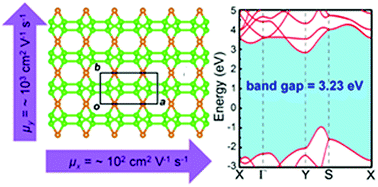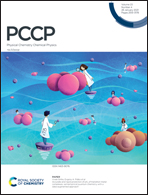A new two-dimensional all-sp3 carbon allotrope with an indirect band gap and superior carrier mobility
Abstract
The success of fascinating graphene has motivated much interest in exploiting new two-dimensional (2D) carbon allotropes with excellent electronic and mechanical properties such as graphdiyne and penta-graphene. However, there are only very few reported structures for stable 2D all-sp3 carbon allotropes. Here, we proposed a new 2D all-sp3 carbon allotrope, named as TTH-carbon. Using first-principles calculations, we investigated its structure, stability, elastic constants, band structure, carrier mobility and optical properties. The results show that it exhibits good stability. Meanwhile, it possesses a total monolayer thickness of 1.35 Å and an indirect band gap of 3.23 eV, comparable to those of well-known penta-graphene (1.20 Å and 3.25 eV). The calculated mechanical and optical properties of TTH-carbon strongly depend on the crystal orientation. The mobilities of electrons and holes along the y direction are ∼3000 cm2 V−1 s−1, which are ten times of its carrier mobilities along the x direction and three times of that of black phosphorus (∼1000 cm2 V−1 s−1). The proposed structure richens the 2D all-sp3 carbon allotropes and its properties make it a promising material for nanoelectronic and photoelectronic devices.



 Please wait while we load your content...
Please wait while we load your content...